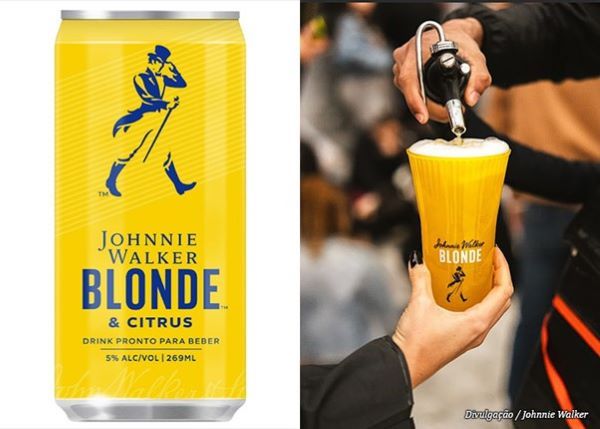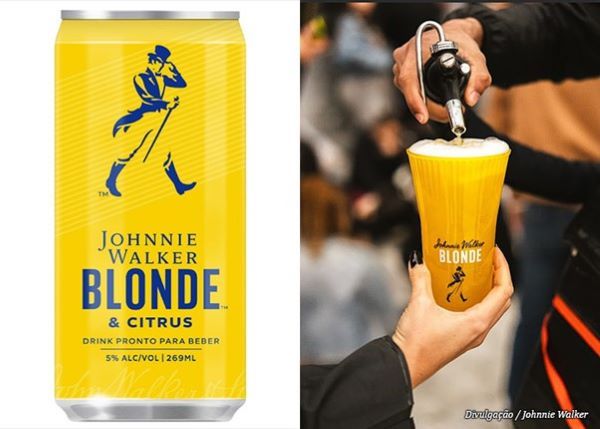Pre-Mixed Scotch
Once derided for its low-grade, alcopop image, ready-to-drink cocktails are moving up-market and demand is surging. While other spirits and other whiskeys pile in, Ron Emler wonders why Scotch is being so reticent …
The lockdowns in response to the global coronavirus pandemic gave a rocket boost to a market segment that was already developing rapidly.
With hospitality outlets shut, consumers, especially in America, experimented with cocktails at home and uncovered a kaleidoscope of flavours based on a range of spirits and alcohol levels.
Today they are extending their repertoire through Ready-to-Drink (RTD) cocktails in a market valued at $1.06 billion this year and which is forecast to enjoy compound annual growth of 13.2% to reach $2.9bn by 2032.
So why does Scotch whisky, which already has a global market worth more than $30bn, not feature in the top 20 RTDs volumes league table complied earlier this year by The Spirits Business?
In Australia, for instance, RTDs already account for more than 13% of the total beverage alcohol market and Suntory, which sees them as a cornerstone of its global growth strategy, has made the country its test bed for new ranges featuring Japanese whiskies and Jim Beam bourbon.

RTDs are not new. Malt-based concoctions such as Hooch and WKD were around 30 years ago. Within a year of its launch in 1990 Bacardi Breezer was selling 4m cases in the US alone. Smirnoff Ice is now in its 25th year, but both products have been reformulated and relaunched to cater for changed tastes.
No longer are RTDs a low-alcohol route into adult beverages for experimenting youngsters. They are the fastest growing segment of the global market driven by consumer demand for convenience.
Industry wisdom suggests that RTDs can act as a recruiting sergeant for the mother brand as new consumers like what they taste and add it to their adult repertoire.
RTD cocktails offer the taste of professionally crafted drinks without the need for preparation, appealing to consumers in social, outdoor, and on-the-go settings. Just open and drink with satisfaction assured.
They also offer a price advantage for cash-strapped consumers. A six-pack of a 5% ABV RTD is more appealing than buying a full strength 70cl bottle which may linger in the drinks cabinet.
Add to that Gen Z's increasing desire for no or low alcohol versions plus low calorie counts and the attractions of a premium RTDs are magnified.
Fredrik Syrén, Pernod Ricard's Global Managing Director RTD & Convenience, says the French group has doubled its RTD business in two years and achieved double-digit growth each year.
"The US remain our primary market, but we are also experiencing diversified growth and gaining shares across our top 5 markets - the US, Canada, the UK, Germany and Australia. With this momentum, we are on track to double our current market share by 2027," he said.
Its RTD version of Jameson Irish whiskey, including Jameson Ginger & Lime is already a big seller.

Pre-mixed bourbon in a can is also going great guns. Even before the Jack Daniels' link with Coke, Brown Forman was annually selling more than 10 million RTD cases of the brand.
And not only have spirits companies acted to meet consumer demand, but soft drinks manufacturers are fast combining with distillers.
Coca-Cola and Brown Forman have launched the classic combination of Jack [Daniels] and Coke; Bacardi and Coke comes pre-mixed, as does Pernod Ricard's Absolut vodka with both Ocean Spray cranberry and PepsiCo's Sprite lemonade. Pepsi is also combining with Diageo's best-selling Captain Morgan rum.
It may take Coke up to 10 years to determine if its foray into the ready-to-drink alcohol market is scalable. To find out, it is already collaborating with seven distillers.
"I don't think there's going to be one killer SKU (stock-keeping unit) that is 50% of the market," said James Robert B. Quincey, Coke's chairman and CEO, in a recent interview. "I think it's going to be much more — the alcohol industry has more variety and more variety-seeking behaviours."
A key factor in the dearth of Scotch RTDs is identity. Distillers have spent decades, in some cases more than a century, building a carefully constructed image and taste for their brands.
A couple of years ago Alexandre Ricard, the head of Pernod Ricard, said that before launching any RTD the taste and image had to be perfect otherwise a brand risked alienating its core market of long-standing afficionados.
It is no surprise, therefore, that today's best-selling RTDs are based on spirits almost always mixed into cocktails. Customers are drinking what they are already ordering.
Pernod Ricard's Syrén say: "Scotch whisky's limited presence in RTDs is largely due to its strong association with sipping and savouring, as it's typically enjoyed neat. Its mixability cues are lower than those of other whiskeys like Irish or Bourbon/American, and lighter spirits, such as vodka, gin or tequila in mixed drinks."
Production costs are also a factor. White spirits are bottled for sale once rectification is complete, Scotch must be matured in oak for a minimum of three years and it's often longer, even for standard blends.
Are brand owners willing to put comparatively young Scotch into a can bearing the logo of a brand they have long nurtured? The extra ageing enhances the image and the price that can be charged for a 70cl bottle.
In addition, until a couple of years ago some distillers were facing a supply conundrum brought on by the post covid 'revenge hospitality' boom. Maturing spirit was in short supply.
However, Syrén says: "RTD innovation in Scotch is growing, as seen with The Glenlivet's Twist and Mix, which allows consumers to enjoy a Scotch-based ready-to-serve cocktail by simply twisting the bottle cap. We believe more innovation, including RTDs, will develop in the Scotch segment in the coming years."
The biggest Scotch producer, Diageo, is also testing the waters with a pre-mixed Johnnie Walker Old Fashioned cocktail in 50cl bottles. It also offers Johnnie Walker Red and cola.

And, having promoted its relatively new Blonde variant as "made to be mixed with lemonade for a taste of summer", it has decided to release an RTD in Brazil on March 25th. The cocktail, known locally as a Blondinho, will be released as Johnnie Walker Blonde & Citrus.
JW Blonde is also very popular as a highball in regions such as Australia and South Korea, where it is striking a chord with Gen Z. That might be a future RTD offering.
In its turn Bacardi could expand its Dewar's Lemon Wedge RTD which is sold uniquely at the US Open Golf Tournament.
Tentative steps for the biggest Scotch Whisky players but all are confident they will become larger as demand for RTDs grows.

Ron Emler is a financial journalist who has observed the drinks industry for 50 years. Following a career on The Times and the Sunday Telegraph, he is consultant City Editor at The Drinks Business.




